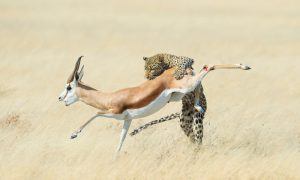Adam Rutherford in The Guardian:
 Somewhere in my parents’ photo albums there is a picture of me, aged seven or eight, lying in my bed, reading. On the wall, there are postcards from holidays, a poster of space pirate Han Solo crouching above a fictional snow lizard called a Tauntaun, and a picture of an equally alien but very real cephalopod, a nautilus, a mollusc with a pin-hole eye and tentacular cirri projecting from its tiger-striped shell. It was cut out from the second copy of Life on Earth that my father had acquired, the book that accompanied the BBC series by David Attenborough. The first was for reading, the second, bought cheap without a dust cover, was for the photos.
Somewhere in my parents’ photo albums there is a picture of me, aged seven or eight, lying in my bed, reading. On the wall, there are postcards from holidays, a poster of space pirate Han Solo crouching above a fictional snow lizard called a Tauntaun, and a picture of an equally alien but very real cephalopod, a nautilus, a mollusc with a pin-hole eye and tentacular cirri projecting from its tiger-striped shell. It was cut out from the second copy of Life on Earth that my father had acquired, the book that accompanied the BBC series by David Attenborough. The first was for reading, the second, bought cheap without a dust cover, was for the photos.
It’s difficult for me to appraise the work of Attenborough critically. I do what I do, to a large degree because of what he has done. Like so many people of my vintage, seeing the wonder of nature with him as our guide was inestimably influential in steering us towards science. That first book was published on Charles Darwin’s 170th birthday, a fitting tribute to the greatest idea anyone has ever had. I approached the 40th anniversary edition with a cautious awe. It does not disappoint. The new Life on Earth is as glorious as the first, if not more so for the sole reason that it has been considerably updated. Science never rests, and while the overarching Darwinian ideas in the 1979 edition are correct, many of the details have moved onwards significantly. It’s not simply that we have observed more of nature with ever increasingly sophisticated technology. Ideas about biodiversity and mass extinctions are now prominently included, and the revelation – now textbook – that birds are dinosaurs is front and centre, having been dismissed the first time round.
More here.
